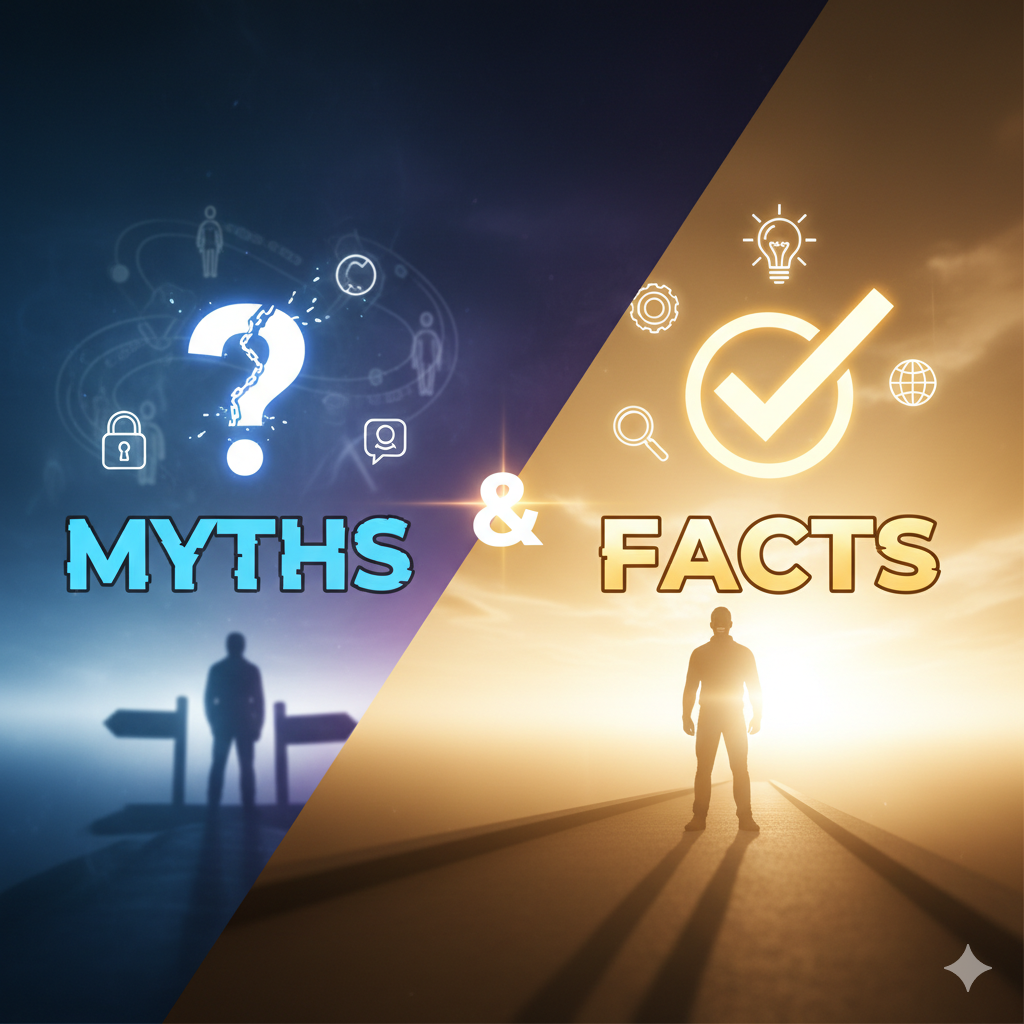Introduction
Thinking about migrating to Australia can be exciting, but it often comes with confusion and conflicting advice. Many people rely on stories from friends, social media posts, or outdated information, which leads to common Australian migration myths. These misconceptions can cause unnecessary stress and, in some cases, prevent you from making the right choices about your future.
Australia’s immigration process is structured and transparent, but it isn’t always simple. From understanding visa requirements to exploring pathways like skilled migration or permanent residency (PR), you need accurate information to make informed decisions. That’s why it’s important to separate fact from fiction before you start your journey.
In this guide, we’ll debunk the most common myths about migrating to Australia. You’ll learn what’s true, what’s outdated, and what you should ignore. By the end, you’ll have a clearer picture of how the system actually works and what steps you need to take if you plan to live, study, or work in Australia.
Myth 1: “Migrating to Australia is Easy and Quick”
It’s a common belief that moving to Australia is as simple as filling out a form and hopping on a plane. The reality is that the Australian immigration process is complex, carefully structured, and often takes several months—or even years—depending on the visa category.
The Reality: A Structured and Lengthy Process
Australia’s visa system is designed to manage demand and ensure migrants contribute positively to the country’s economy. Whether you are applying for a skilled migration visa, a student visa, or permanent residency (PR), you must meet strict eligibility criteria.
Whether you are applying for a skilled migration visa, a student visa, or permanent residency (PR), you must meet strict eligibility criteria.
Some factors that typically affect your application include:
- Points system: Skilled visas use a points-based system, where your age, qualifications, work experience, and English proficiency all matter.
- Occupation lists: You may need to nominate an occupation from Australia’s skilled occupation list, which changes based on labor market demand.
- Health and character checks: Australia requires medical assessments and police clearances to ensure migrant suitability.
- Processing times: Applications for skilled visas or PR can take months to finalize, depending on demand and completeness of documentation.
Why It Feels Complicated
Australia attracts thousands of applicants every year, which means you face strong competition. The Department of Home Affairs regularly updates visa policies to balance skilled migration intake with national priorities. As a result, your application requires careful planning and accurate documentation.
How to Approach the Process Effectively
Instead of thinking of migration as “easy and quick,” view it as a long-term investment. Here are some tips to increase your chances of success:
- Start your application early and allow for delays.
- Check the most recent visa processing times published by the Department of Home Affairs.
- Gather documents well in advance—certifications, transcripts, English test scores, and reference letters.
- Seek professional help if you’re unsure, especially when applying for complex visas like employer-sponsored or skilled migration visas.
💡 Note: Many applicants feel overwhelmed by the paperwork and eligibility requirements. Working with an experienced migration consultancy in Australia, such as Blue Orbit Services, can simplify the process and help you avoid costly mistakes.
Myth 2: “You Only Need to Speak Basic English”
Reality: English Proficiency Requirements Vary by Visa Type
Many people believe that a few phrases in English are enough to qualify for an Australian visa. In reality, your level of English proficiency directly affects your visa eligibility, especially if you are applying under the skilled migration program or aiming for permanent residency in Australia.
Australia uses a points-based system for most skilled visas, and English test scores contribute to your overall points. Better scores can boost your ranking in the skilled migration pool, giving you a stronger chance of receiving an invitation to apply.
Which English Tests Are Accepted?
To prove your proficiency, you must take an approved English language test. The most commonly accepted exams include:
- IELTS (International English Language Testing System)
- PTE (Pearson Test of English)
- TOEFL iBT (Test of English as a Foreign Language)
- Cambridge C1 Advanced
- Occupational English Test (OET) – for healthcare professionals
Your required score depends on your visa category. For example, skilled visas may require higher scores than student visas, while partner visas usually have more flexible requirements.
Why English Proficiency Matters Beyond Visa Approval
Strong English skills go beyond ticking a box on your visa application. Once you arrive in Australia, you’ll rely on English to:
- Find employment: Most jobs, including those on the Skilled Occupation List, require effective communication.
- Study successfully: If you’re an international student, a good command of English is essential for lectures, assignments, and exams.
- Integrate into the community: Everyday activities—from renting a house to accessing healthcare—require clear communication.
How to Improve Your Chances
If you feel uncertain about meeting the English requirements, consider these steps:
- Enroll in an accredited English preparation course.
- Take practice tests to identify weak areas.
- Retake the exam if you believe you can score higher to increase your migration points.
Remember, improving your English is an investment in your migration journey and your life in Australia.
Myth 3: “Only Highly Skilled Professionals Are Eligible”
It’s a common belief that Australia only welcomes doctors, engineers, or IT specialists. While skilled professionals are in high demand, this myth overlooks the diverse migration pathways available for people with varying levels of skills, experience, and backgrounds.
Reality: Australia Offers Multiple Visa Options Beyond “Highly Skilled” Roles
Australia’s immigration system is built to address different labour market needs, not just niche professional gaps. That means you don’t need to be in a top-tier profession to qualify for a visa.
- Skilled Migration Visa Pathways: The Skilled Independent Visa (Subclass 189) and the Skilled Nominated Visa (Subclass 190) are points-tested visas. These cover a wide range of occupations listed on the Skilled Occupation List—from trades like electricians and plumbers to healthcare support roles.
- Employer-Sponsored Visas: Employers in Australia can sponsor overseas workers for jobs they cannot fill locally. This opens opportunities for semi-skilled and trade occupations.
- Regional Migration Programs: Australia encourages migrants to settle in regional areas through the Skilled Work Regional (Provisional) Visa (Subclass 491). These programs often have more flexible occupation lists, making them accessible to a broader range of applicants.
In-Demand Occupations Go Beyond “White-Collar” Roles
Every year, the government updates its in-demand jobs list. It doesn’t just include medical specialists or tech professionals—it also features roles in construction, education, hospitality, and aged care. If your skills align with what Australia needs, you may qualify for a migration pathway, even if you’re not in a traditional “highly skilled” profession.
What This Means for You
If you’ve been holding back from applying because you think you don’t “fit the bill,” it’s worth re-examining your options:
- Review the occupation lists to see if your role is included.
- Explore employer sponsorship opportunities in industries where local shortages exist.
- Consider regional migration programs, which often provide faster routes to permanent residency.
Myth 4: “Studying in Australia Guarantees Permanent Residency”
Why This Myth Exists
Many international students believe that completing a degree in Australia automatically leads to permanent residency (PR). This misconception comes from the fact that Australia values skilled graduates and provides pathways that can help you transition from a student visa to a skilled visa or PR. However, studying alone is not enough.
The Reality: Education Helps, But It’s Not a Guarantee
Your Australian qualification can improve your chances of securing PR, but it’s only one part of the points-based system. The Department of Home Affairs considers several factors when assessing PR applications:
- Age – Applicants between 25–32 score higher points.
- English proficiency – Strong scores in IELTS, PTE, or TOEFL boost eligibility.
- Work experience – Skilled work experience in Australia or overseas adds valuable points.
- Occupation demand – Your field of study must appear on the Skilled Occupation List (SOL) or relevant state/territory list.
- Sponsorship – Employer or state nomination can strengthen your application.
Without these additional factors, completing a degree alone won’t qualify you for PR.
What Studying in Australia Does Offer
While not a direct PR guarantee, your education provides important advantages:
- Post-Study Work Visas (485 Visa) – Allows you to gain Australian work experience after graduation.
- Extra points for study in Australia – Completing a recognized course (especially in regional areas) earns you additional migration points.
- Pathway to skilled migration – Courses in high-demand industries (like nursing, IT, engineering) can align with the occupations needed for Skilled Migration visas.
Common Questions Students Ask
1. Does every student get PR after completing their degree?
No. Students must meet additional PR requirements including skills, work experience, and English scores.
Key Changes from January 1, 2025:
- Students need genuine Confirmation of Enrolment (CoE) at visa application – offer letters no longer sufficient
- New ‘Genuine Student’ requirement replaces ‘Genuine Temporary Entrant’ rule
- Applicants must prove education is their primary purpose, with any extended stay through official post-study work pathways only
These changes ensure only genuine students with confirmed places can enter Australia and prevent misuse of study visas for work purposes.
Which courses improve my PR chances?
Courses aligned with the Skilled Occupation List—like healthcare, teaching, engineering, and IT—offer better prospects than courses with low demand.
Can studying in regional Australia help?
Yes. Regional study attracts extra points in the PR system, and certain regional visas can provide more accessible pathways to permanent residency.
👉 For tailored advice, migration specialists like Blue Orbit Services can help you understand your PR pathways after study and guide you on the best visa options to match your skills and goals.
Myth 5: “Australia’s Healthcare System is Free for All Migrants”
It’s a common belief that once you migrate to Australia, you automatically gain access to free healthcare. While Australia does have a world-class public healthcare system—Medicare—not all migrants are entitled to it. Your visa status plays a major role in determining whether you can use Medicare or if you must arrange private health coverage.
Who Gets Access to Medicare?
- Australian citizens and permanent residents (PRs): You are fully covered under Medicare, which provides free or subsidised treatment at public hospitals and access to bulk-billed GP consultations.
- Temporary visa holders: Most temporary visa holders do not secure Medicare eligibility. However, some visa subclasses may allow you to enrol if there is a reciprocal healthcare agreement between Australia and your home country.
- International students: You are required to hold Overseas Student Health Cover (OSHC) for the entire duration of your studies. OSHC helps you meet visa requirements while giving you access to basic medical services.
What About Private Health Insurance?
If you migrate on a skilled visa, employer-sponsored visa, or parent visa, and you don’t yet qualify for Medicare, you will likely need private health insurance. This ensures you can access hospital care, specialists, and other services without excessive out-of-pocket costs.
Private insurance is also crucial if you want faster treatment times or access to private hospitals. Many migrants choose a combination of Medicare (once eligible) and private insurance to balance affordability and flexibility.
Why This Myth Persists
Australia’s reputation for universal healthcare often leads newcomers to assume it applies equally to everyone. In reality, healthcare access in Australia depends on your visa category and personal circumstances. Not knowing this in advance can result in unexpected costs and even visa compliance issues.
Myth 6: “Migrants Take Jobs Away from Australians”
The Reality: Migration Strengthens Australia’s Workforce
It’s a common misconception that skilled migration to Australia reduces opportunities for local workers. In reality, migrants fill critical skill shortages that would otherwise remain vacant. The Department of Home Affairs and independent studies consistently show that migrants complement, rather than replace, the Australian workforce.
Why Skilled Migrants Are Needed
- Addressing skill shortages: Certain industries—such as healthcare, construction, IT, and engineering—rely heavily on international talent. Without skilled worker visas, these gaps would slow down economic growth.
- Supporting regional development: Many skilled migrants take up opportunities in regional areas where local demand for workers is high but the talent pool is limited.
- Boosting innovation and diversity: Migrants bring fresh perspectives, global experience, and entrepreneurial skills that help Australian businesses compete internationally.
Impact on Wages and Employment
Research from the Australian Bureau of Statistics and government migration reviews indicates that migration does not drive down wages or take jobs from Australians. Instead, it boosts productivity and creates new roles by expanding industries. For example, skilled professionals often support sectors such as aged care or IT services, enabling Australian businesses to grow and hire more local staff.
What This Means for You as a Prospective Migrant
If you are considering skilled migration to Australia, your expertise could directly contribute to areas where Australia needs workers most. By entering through the skilled visa program, you aren’t competing against local workers—you’re filling roles designed to strengthen the country’s economy and community.
Myth 7: “Australia’s Immigration System is Overwhelmed”
The Myth
You may have heard that “Australia’s immigration system is overloaded and approvals rarely come through.” This misconception often discourages people from applying, even when they meet the eligibility criteria.
The Reality
In truth, Australia’s immigration system is structured and carefully managed. The Department of Home Affairs sets annual planning levels to balance economic growth, workforce needs, and humanitarian commitments. Rather than being overwhelmed, the system uses visa quotas, processing priorities, and skilled occupation lists to ensure migration remains sustainable.
How the System Works
- Planning Levels: Each year, the government allocates places across categories such as skilled migration, family visas, and humanitarian programs.
- Quota-Based Approach: Skilled visas and permanent residency options are capped, so the intake aligns with Australia’s labor market and population goals.
- Streamlined Pathways: Certain visas, like employer-sponsored or regional migration visas, are prioritized because they fill urgent skill shortages.
What This Means for You
If you meet the eligibility criteria, your application is not competing in an “overloaded” system—it’s being assessed within a structured framework. While processing times may vary, well-prepared applications that match Australia’s migration priorities have a strong chance of success.
Conclusion
Migrating to Australia is a life-changing decision, and it’s easy to feel overwhelmed by the myths and half-truths you encounter along the way. By now, you know that the Australian immigration process is structured, with clear visa requirements, eligibility criteria, and pathways for skilled migration, students, and families alike.
The key takeaway is this: don’t let misconceptions shape your choices. Instead, focus on credible information, official resources, and expert advice. Whether you’re considering a skilled migration visa, exploring permanent residency in Australia, or weighing your options as an international student, the right guidance can save you time, money, and unnecessary stress.
If you want personalized support, Blue Orbit Services can help you navigate every stage of your journey. From skilled visas and PR applications to employer sponsorship and student migration pathways, their team provides end-to-end assistance tailored to your needs. With the right partner, your migration to Australia becomes less about confusion—and more about creating a successful future.

About the Author:
Kunal is an Australian Solicitor with over 10 years of legal experience in both Australia and abroad. Admitted to the Supreme Court of Victoria, he uses his unique background to help businesses, professionals, and individuals with their legal, commercial, and migration needs.




